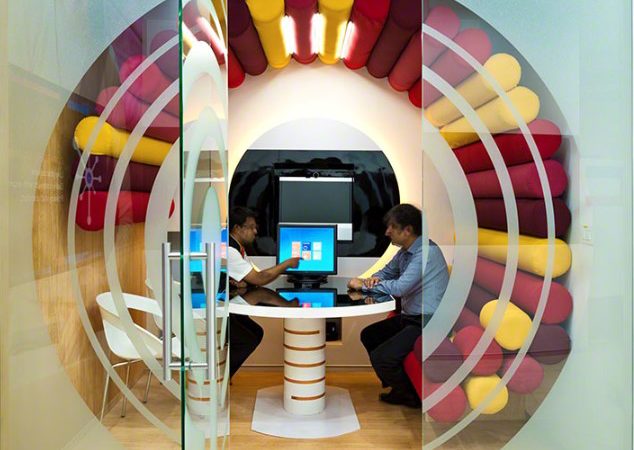The future of retail banking
 First published in Blueprint, January 2017
First published in Blueprint, January 2017In retail banking, the elephant in the room is that there simply may not be any left in years to come. More and more people, and not just the young, do their banking online. Yes, most banks are pretty useless at social media (I’m told Virgin Money is an exception, but I don’t bank with them). Yes, online banking is vulnerable to breaches of cyber security and fraud – as 9000 customers of Tesco Bank recently found out. But the process of cutting costs around, downsizing and completely eliminating High Street banks appears unstoppable all over the world. In the UK, there were 222 branch closures in 2013; in 2014 British banks abandoned their policy of retaining the ‘last bank in town’ in urban areas where services were sparse, and last year a further 681 facilities shut down. In 2016, the British Bankers’ Association reports, the average daily number of customer visits per branch, outside of ATM transactions, was a paltry 71 – about 30 down on the 2011 figure.
In the 1980s, the designers Fitch, in the shape of a charismatic Mark Landini, overhauled the Midland Bank by opening up space to customers, installing floorboards in glossy wood veneers and hanging low-voltage spotlights from ceilings. Within a decade, other banks turned from being dusty pillars of the local community to being cloned, glitzy shops as brands. Yet the queues remained awful and even today, when you go in and look over the teller’s shoulder to the conditions in which bank staff work, all tawdry disorganisation and management messages Sellotaped to walls, it’s a wonder that anybody has any confidence at all in their local bank. Also, as the habit of continuous use fades, so knowing which electronic hole or box for handling paper chits is where, and exactly what it looks like, becomes more difficult.
The future isn’t all bleak, though. Management consultants such as Bain and EY are adamant that retail banking outlets still have a future. As the population ages and retires later, big financial decisions such as a new mortgage, or how best to manage one’s tapering off of paid employment, cannot be left to a laptop or mobile phone: for trusted advice in a world of continuing financial scandals, people will go on needing the personal touch of an advisor, in a setting which is intimate and secure. Indeed, the speed and richness of the informal, face-to-face conversations that can be had in local retail branches will continue to make them a key channel.
In the branch, better digital communications for customers – not just monitors, but electronic walls, tables and kiosks (including those for instantly opening an account and getting a debit card) – have already come to State Bank of India, confirming that there is enormous scope for makeovers in interaction design. In years to come, too, we can expect areas of a typical branch to be devoted to collaborations between staff and customers aimed at allowing the latter to design their own financial products.
The branch will still be needed to explain those Internet wrinkles that are unfathomable in the privacy of your own home or on the move. On the other hand, paperless finance looks unlikely: cheques, for instance, will take a long time to die altogether. Last, despite all the hopes about Bitcoin and virtual currencies signaling an end to cash, simply the human desire for anonymity will ensure that notes and coins survive. Small firms in particular, and especially small retailers, will still need to go somewhere to unload their takings.
For mid-sized organisations – company boards, Parent Teacher Associations, community groups – there will be more 3D fly-through simulations of tomorrow’s more volatile patterns of income and expenditure. At the same time, bank branches will, like all retailers faced with the challenge of the Internet, become more physical. One German regional bank, for example, has installed a 3D printer in its foyer. Why? Because when a manufacturing client wants to invest in the latest machines, the bank’s staff should know a bit about them.
Ironically, the bank branch of the future will be more high-tech design studio than glitzy hotel lobby. Plenty of pickings for information and interior designers there.
I tell you these COMMUNISTS are everywhere .
Er... China’s race to the moon to take private sector robots on Chang’e-8 mission
https://www.scmp.com/news/china/science/article/3296324/change-8-moon-mission-first-get-robotic-boost-chinas-private-sector?share=EN4%2BL4ZaGslezQXZBBDZEr1gs99Ko70v4a6kkRcfpshbjYVSb4v4IHuqxfqXTPyDE9QFZ5r8cYMuWwdT2t34h7ARZah8SH6Zw9YAWPFRuRO0dxXbnqLJWYRf0wjK4R2AvhKSBC09Ikdm%2BXtxSMdkTg%3D%3D&utm_campaign=social_share
Articles grouped by Tag
Bookmarks
Innovators I like

Robert Furchgott – discovered that nitric oxide transmits signals within the human body

Barry Marshall – showed that the bacterium Helicobacter pylori is the cause of most peptic ulcers, reversing decades of medical doctrine holding that ulcers were caused by stress, spicy foods, and too much acid

N Joseph Woodland – co-inventor of the barcode

Jocelyn Bell Burnell – she discovered the first radio pulsars

John Tyndall – the man who worked out why the sky was blue

Rosalind Franklin co-discovered the structure of DNA, with Crick and Watson

Rosalyn Sussman Yallow – development of radioimmunoassay (RIA), a method of quantifying minute amounts of biological substances in the body

Jonas Salk – discovery and development of the first successful polio vaccine

John Waterlow – discovered that lack of body potassium causes altitude sickness. First experiment: on himself

Werner Forssmann – the first man to insert a catheter into a human heart: his own

Bruce Bayer – scientist with Kodak whose invention of a colour filter array enabled digital imaging sensors to capture colour

Yuri Gagarin – first man in space. My piece of fandom: http://www.spiked-online.com/newsite/article/10421

Sir Godfrey Hounsfield – inventor, with Robert Ledley, of the CAT scanner

Martin Cooper – inventor of the mobile phone

George Devol – 'father of robotics’ who helped to revolutionise carmaking

Thomas Tuohy – Windscale manager who doused the flames of the 1957 fire

Eugene Polley – TV remote controls



0 comments